The Sloth Wellness Centre also houses anteaters - An Interview with Monique Pool, founder and director part 3
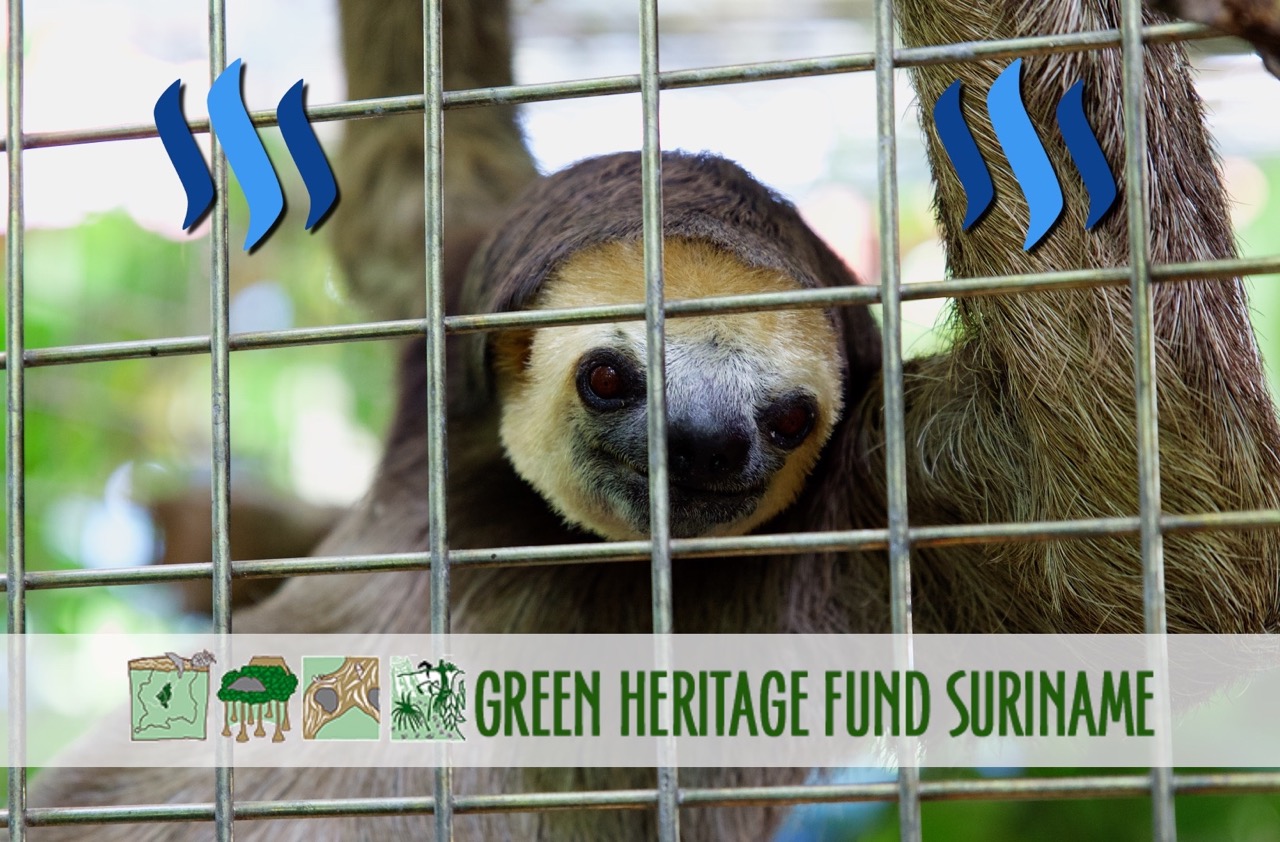
This is the third and final part of the interview with Monique Pool, the founder and director of the Green Heritage Fund Suriname. One of the main objectives of this charitable non-profit organisation is the preservation and study of the habitat of the animals in the Xenarthra order. These animals are the anteaters, armadillos and the sloths.
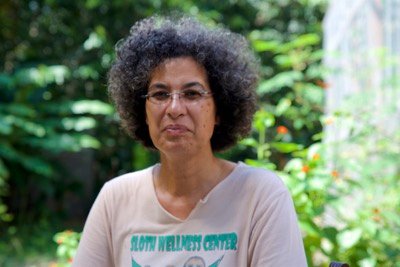
For these animals a rescue centre was build: the Sloth Wellness Centre. If you missed the first two parts in this series, you can read them here and here.
In the third part of this interview, Monique discusses the necessity of preserving the animals habitat. It is the sloths that are rescued, rehabilitated and released the most but sometimes there are anteaters at the sloth wellness centre. Monique also discusses them and the armadillos that unfortunately are being hunted.

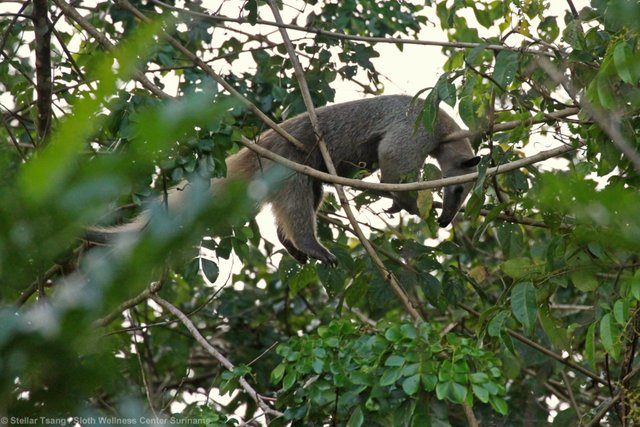
Johannes, a lesser anteater sleeping in the trees. Photo by Stellar Tsang.
As mentioned before, it's mainly sloths in need of rescue. But since February 2017 the centre has been caring for Johannes, a lesser anteater baby. Johannes was staying in the enclosure build for the giant anteaters.
This enclosure is about 30 meters long and 10 meters wide and stretches out into the forest. The enclosure has an organic shape in which the animals can roam freely. In this way the anteaters don't bond too much to humans.
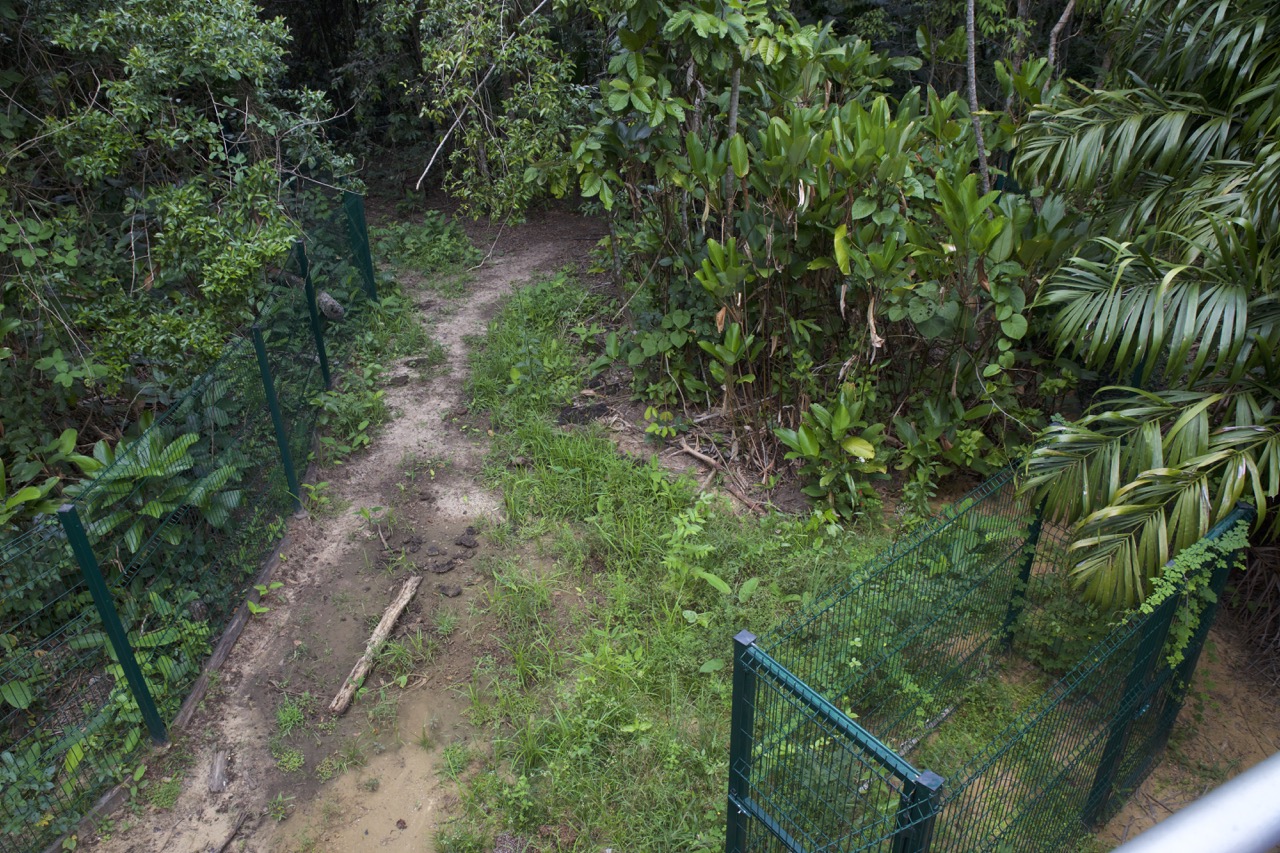
The enclosure build for the anteaters.
Johannes has now become a healthy tree dwelling youngster that sometimes returns to his hammock for a nap or for a nice bowl of anteater mix. Johannes is free to come and go as he pleases.
The lesser anteater or tamandua is much smaller than its relative, the giant anteater. Its size is up to 3 feet with its tail measuring 2 feet. They weigh up to 17 pounds or 7,7 kilograms. They have poor vision but can hear and smell quit well.
It uses its strong claws to break open ants and termites nests. They eat up to 9000 ants or termites a day. They have no teeth but the stomach grinds the food instead. Their mouth is very small like the width of a pencil but it can also lick up honey and soft juicy fruit.
The tamandua can be quit smelly. When threatened they spray a very unpleasant foul smelling secretion from a gland at the base of the tail. Similar like a skunk but four times as powerful. This gives them the nickname: "stinkers of the forest".
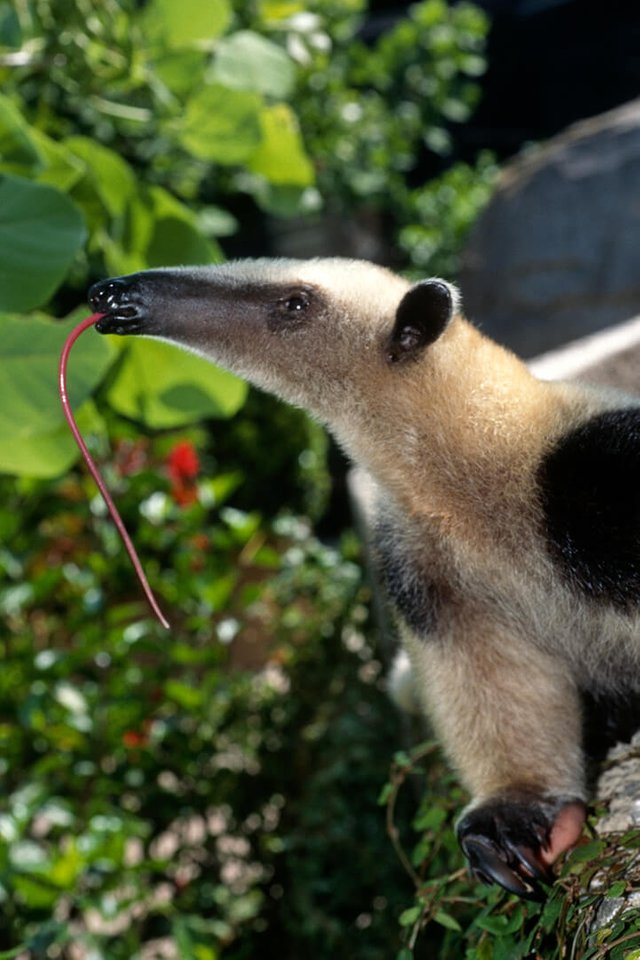
source
The enclosure has also been used to house Igor, a giant anteater. Igor was in the hands of a wildlife trafficker and was wounded on his front right leg. The vet arranged that Igor would be released to the centre to receive proper medical attention.
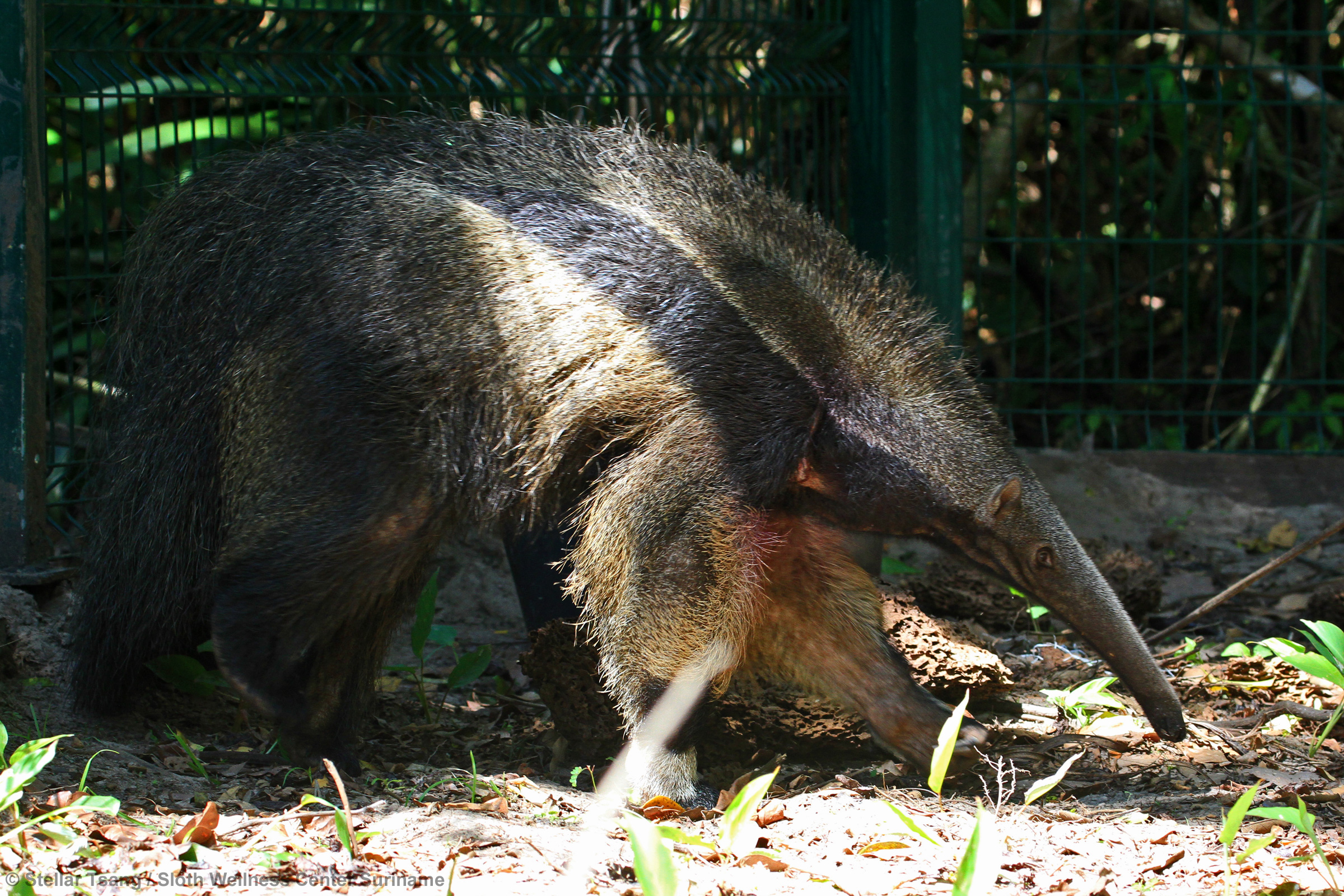
Igor, a giant anteater, Photo by Stellar Tsang
Igor arrived 5 October at the centre. Johannes was not always pleased with the intruder but Igor just ignored him or gave him a friendly slap with his tail. At the end of October the veterinarian observed that his wounds healed well and that he could be released. He was released at a beautiful spot at an uninhabited side of the Saramacca river.
When giant anteaters go to sleep they use their long tail as a blanket. They feed primarily on ants and termites. They use their big fore claws to dig open the nests and uses its long sticky tongue to lick them up. The giant anteater is about 2 meters in length and can weigh up to 40 kg.
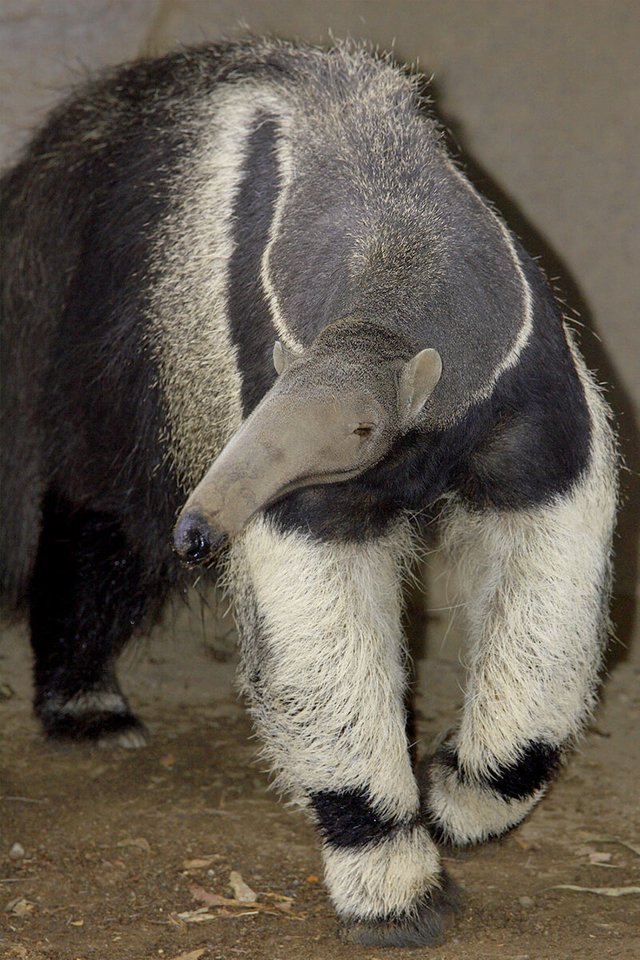
source
The giant anteater is threatened according to the IUCN. The conservation status of this animal is vulnerable. The main threats to its survival are habitat destruction, fire and poaching for fur and bushmeat.
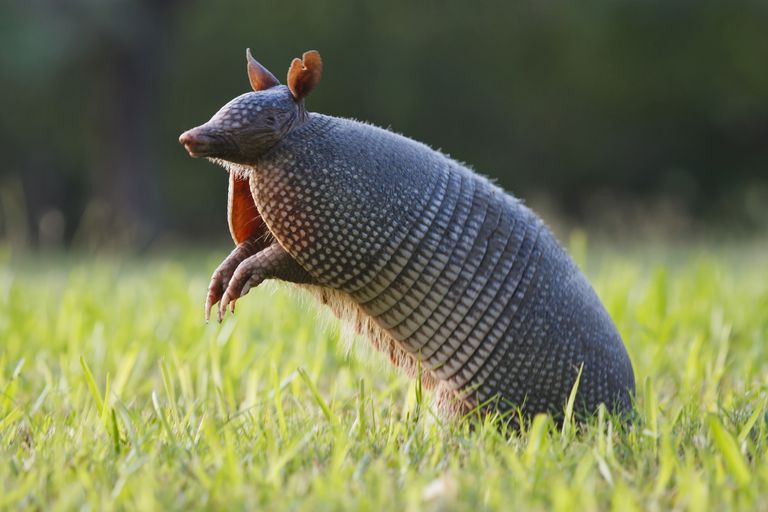
Source
Another animal in the Xenarthra Order that is being hunted for bushmeat is the armadillo. Armadillo means "little armoured one" in Spanish. The plates of the armadillo are made out of bone. They have between 3 to 9 plates depending on the species. Their armour protects them from predators. They have very poor eyesight and trust mainly on their nose to hunt for food. They exclusively feed on invertebrates that they dig up with their strong claws.
Hunting is unfortunately quite popular in Suriname. And although it might be a necessity for the indigenous people in the interior there's no need to hunt anymore for the average person. I hope that this post and interview contribute to raise awareness about the importance of the protection of the environment and these beautiful animals.
Much Love,
Gardenbsquared
If you want to read other inspiring and interesting stories by the other members of the ecoTrain, click here.

You have received an upvote from @livesustainably. I promote and curate content that encourages and educates others in living sustainably.
Remember to use the tag #livesustainably so that I don't miss any posts you make on the theme of sustainability.
Great initiative. Thank you for promoting me.
I find your post really interesting. I appreciate your effort for the post.
Thank you.
Thank you @healingherb for promoting this post together with https://steemit.com/budget/@jerrybanfield/introducing-steem-budget-proposals